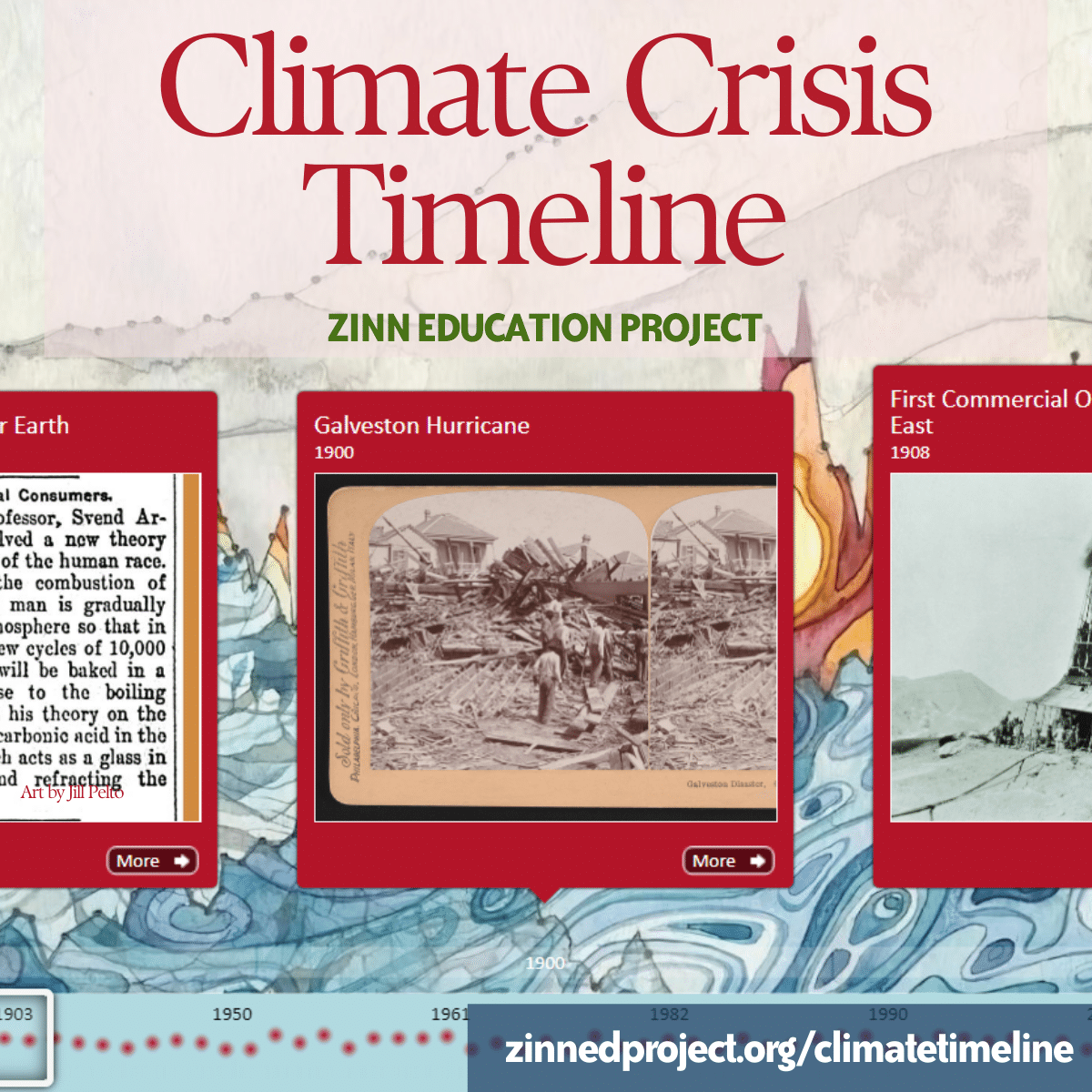The year 2005 saw the most active hurricane season on record, with 27 named storms. One of these was Hurricane Katrina, the third deadliest storm in U.S. history, and one that took a disproportionate toll on the Gulf Coast’s Black residents.
Katrina was upgraded from a storm to a hurricane on August 25, 2005, hitting the Florida coast that day with 125 mph winds. Four days later, on August 29, Katrina made landfall in Louisiana as a Category 3 hurricane, with winds of 140 mph.

Flooded New Orleans, Louisiana, September 11, 2005. Photo by Commander Mark Moran, NOAA Corps. Source: Public domain
The hurricane breached 53 different levees in New Orleans, with 80 percent of the city flooded. Thousands of people lost their lives, and many thousands more were forced to abandon their homes and seek relief where they could.
In her 2010 article for The Nation, Reconstructing the Story of the Storm: Hurricane Katrina at Five, Rebecca Solnit reflected on its destruction and legacy:
In August 2005, 90,000 square miles of the Gulf Coast were devastated; more than 1,800 people died; 182,000 homes were severely damaged in New Orleans alone, where 80 percent of the city was flooded. Hundreds of thousands went into an exile from which some will never return. A great and justified bitterness arose in African-Americans who were demonized by the media and the government and who felt that they had not been treated as citizens or even as fellow human beings. An African-American woman at an antiwar rally in the nation’s capital a month later carried a sign saying, “No Iraqis left me on a roof to die.” [. . .]
After Hurricane Katrina, neoliberals and Bush provided a near-perfect example of Naomi Klein’s theory of disaster capitalism. Everything from supplying buses for evacuation to tarps for torn-up roofs became an opportunity for Bush supporters to reap financial rewards. The city’s public housing was torn down; the schools became charter schools, many along military lines. Told this way, what happened was pure loss, for the left as well as for the poor (though the schools before Katrina had been a mess). But that’s not all that Katrina triggered.
During the storm and its aftermath, far more people did heroic things, and these [. . .] are the key missing stories of the storm.
In an interview with the Today show, historian Michael Eric Dyson had this to say about Hurricane Katrina:
Hurricane Katrina overwhelmed levees and exploded the conventional wisdom about a shared American prosperity, exposing a group of people so poor they didn’t have $50 for a bus ticket out of town. If we want to learn something from this disaster, the lesson ought to be: America’s poor deserve better than this.
Watch this Democracy Now! interview with Michael Eric Dyson about his book, Come Hell or High Water: Hurricane Katrina and the Color of Disaster.
Additional Resources
A Katrina Reader: Readings by & for Anti-Racist Educators and Organizers
What New Orleans’ Common Ground Collective Can Teach Us About Surviving Crisis Together by Shane Burley
Black Flags and Windmills: Hope, Anarchy, and the Common Ground Collective by scott crow (PM Press)
When the Levees Broke: A Requiem in Four Acts (Acts 1 & 2) a documentary by Spike Lee
This event is included on the Zinn Education Project’s Climate Crisis Timeline.













Twitter
Google plus
LinkedIn